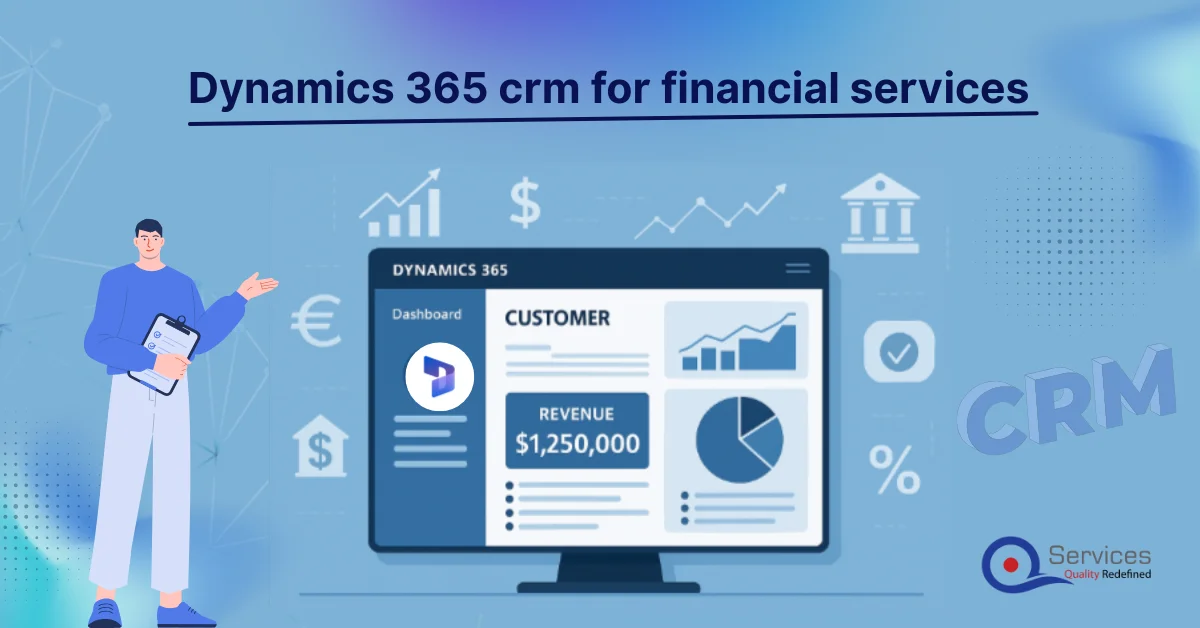
Rewards
.





CANADA
55 Village Center Place, Suite 307 Bldg 4287,
Mississauga ON L4Z 1V9, Canada
Certified Members:
.



Home » Digital Health Transformation with Microsoft Technologies and Angular

Healthcare is undergoing a massive shift thanks to new technologies. Think cloud computing, artificial intelligence (AI), and the tools developers use to build websites and apps. Hospitals and doctors’ offices are all trying to get better at caring for patients, running more smoothly, and keeping data safe. That’s why using Microsoft tech and Angular together has become a popular way to build modern, easy-to-use digital healthcare solutions. You’re seeing this everywhere – from hospitals and clinics to research labs and even online doctor services. Healthcare groups around the world are using these technologies to completely change how they deliver services.
The way healthcare works now can be a bit of a mess. It’s often slow, things aren’t connected well, and there’s lots of paperwork. Many doctors’ offices and hospitals still use old systems that make it harder to do their jobs and can even affect patient care. That’s why it’s super important to make some changes and bring healthcare into the modern age with digital tools. This is especially true since more people want things like:
So, what’s making this change so important? Here are a few reasons:
Imagine being able to easily see your medical records, having a treatment plan just for you, and chatting with your doctor online. That’s much better than the old way.
Computers can help get rid of paperwork and manage things like scheduling and supplies. This makes everything faster and easier.
It’s super important to protect your personal health information. New digital tools can help do that.
Doctors, nurses, and other healthcare workers need to be able to share information easily, even if they’re in different places.
Old systems can be expensive. Switching to new, cloud-based systems can save money and make it easier to grow.
By making these changes, healthcare providers can give you better care that’s focused on you. That’s where companies like Microsoft come in. They’re offering new tools to build healthcare apps that are safe, easy to use, and have lots of helpful features.
Microsoft is a big company that’s helping to change healthcare. They have tools that can:
By using Microsoft’s tools, hospitals and doctors’ offices can manage their information better, make smarter decisions, and give you better service.
Think of Microsoft Cloud for Healthcare as a toolkit made just for healthcare. It includes different Microsoft programs that work together to give you everything you need, like:
This makes it easy for different systems to share your information.
With Microsoft Cloud for Healthcare, hospitals can give you better care and still run smoothly.
Azure Health Data Services is a place where healthcare groups can store, manage, and study your health information safely. It has:
This makes it easy for different systems to talk to each other.
Azure Health Data Services help make sure everyone can share information safely, so you get the best care.
Microsoft Power Platform has tools that let healthcare workers:
For example, they can:
By using Microsoft Power Platform, healthcare workers can spend less time on boring tasks and more time taking care of you.
Angular, which is a really useful tool from Google for building websites and apps, is super important for making healthcare apps that are easy to use, work well, and are safe. Whether it’s creating websites where patients can log in, dashboards for online doctor visits, or apps that track health information in real-time, Angular lets developers build apps that have lots of cool features.
Angular is built in a way that makes it perfect for big healthcare apps. It lets developers create pieces that can be reused, so the apps are easy to keep up-to-date and can grow as the healthcare organization gets bigger.
Security is a HUGE deal when it comes to healthcare apps. Patient information has to be protected from hackers. Angular has security features built-in, such as:
Protection from sneaky code: It helps prevent hackers from injecting bad code into the app.
Content Security Policy (CSP): This is like a set of rules that helps prevent problems.
Making sure only the right people can access information: It connects to systems that verify who you are before letting you see sensitive data.
These features help healthcare apps follow important rules, like HIPAA and GDPR, which keep patient information private and safe.
Angular is designed to be fast. It has features that help it load quickly, work efficiently, and update information in real-time. This is important for healthcare apps that need to show the latest information, like:
Angular works really well with Microsoft’s tools, letting developers use:
By using Angular with Microsoft’s cloud and AI tools, healthcare providers can build amazing apps that make patient care better and make things run more smoothly.
Get free Consultation and let us know your project idea to turn into an amazing digital product.

As hospitals and clinics keep moving towards using digital tools, the way Microsoft and Angular work together is going to lead to some big improvements. We’re talking better care for patients, easier ways to manage information, and things running much smoother behind the scenes. Here are a few cool things we can expect:
More and more people want to see their doctor online. Angular is helping build these online visit platforms, and when you add in Microsoft’s AI and communication tools, you get:
Forget those clunky old patient portals! New healthcare apps, built with Angular and Microsoft Dynamics 365 will let you:
By connecting things like smartwatches and other devices to Azure Health Data Services and Angular dashboards, doctors and hospitals can:
We’re all buzzing about bringing healthcare into the 21st century, right? Online appointments, instant access to records…sounds amazing! But hold on a second, because it’s not all sunshine and rainbows. There are some real-deal challenges to making this digital dream a reality. Think of them as speedbumps on the road to better healthcare for everyone.
The main hurdles? They boil down to fairness, connection, and safety:
A diagram of a health care system
AI-generated content may be incorrect.
We need to make sure that everyone benefits from these advancements, not just the folks who already have it easy.
Getting different technologies to play nicely together is a surprisingly tough nut to crack.
Protecting your super-sensitive medical information is absolutely critical.
Let’s dig a little deeper:
It’s no secret that healthcare isn’t always fair. Where you live, your income, and even your background can affect the quality of care you receive. We’ve got to make sure that going digital doesn’t widen those gaps. Imagine someone in a rural area with spotty internet trying to access an online specialist. Or someone who’s never used a smartphone struggling to manage their appointments. We can’t leave them behind. We need to consider:
You’ve probably heard the word “interoperability” thrown around. It’s a fancy way of saying that different systems need to be able to share information seamlessly. Picture this: Your doctor uses one system, the hospital uses another, and the lab uses a third. If they can’t “talk” to each other, you end up repeating yourself, tests get duplicated, and things get missed. It’s a headache for everyone. The consequences of not getting this right?
Healthcare providers are sitting on a mountain of incredibly personal data – your name, your address, your medical history, everything. This information is a goldmine for hackers, so we need to be absolutely vigilant about security. It’s not just about protecting your privacy; it’s about protecting your identity and your financial well-being. The basics?
The bottom line? Going digital has the potential to transform healthcare for the better, but we need to be aware of these challenges and address them head-on. It’s not just about technology; it’s about people.
So, everyone’s talking about making healthcare digital, but it’s not as easy as just flipping a switch. There are some real challenges we need to figure out. The biggest ones are making sure everyone has a fair shot at getting healthcare, making sure different systems can “talk” to each other, and keeping your medical information safe and private.
It’s a sad fact that not everyone gets the same level of healthcare. Where you live, how much money you have, and even your race can make a big difference. So, we need to make sure that going digital doesn’t make things even worse for people who are already struggling.
Think about it:
Getting Different Systems to Talk to Each Other
Imagine trying to put together a puzzle where the pieces are from different boxes. That’s kind of what it’s like when different healthcare systems try to share information. We need to find a way to standardize everything so that everyone can understand each other. This is called “interoperability.”
If we don’t get this right, it can lead to:
Keeping Your Medical Information Safe and Private
Hospitals and clinics have a LOT of sensitive information about you, like your name, birthday, address, health problems, and even your medical history. They also have information about their own business, like payroll and contracts.
Because this information is so sensitive, it’s super important to keep it safe from hackers and other threats. That means using things like:
Making you prove who you are in more than one way.
Regularly saving copies of your data in case something goes wrong.
Teaching employees how to spot and avoid scams.
Installing the latest security fixes.
Share your project idea with us. Together, we’ll transform your vision into an exceptional digital product!

So, as we’ve seen, bringing Microsoft technologies and Angular together has the potential to seriously level up healthcare. We’re talking easier access to doctors, smoother hospital operations, and smarter ways to use your health info to get you the best possible care. But here’s the key takeaway: it’s not just about tech.
To really make this work, we need to be mindful of a few things. First, making sure everyone can actually use these new tools. We can’t leave anyone behind because they don’t have internet access or the right tech skills. Second, we need to make sure all the different healthcare systems can actually talk to each other – no more information silos! And finally, we need to make sure your personal health information is super secure and protected. If we keep these points top of mind – fairness, connection, and security – we can use Microsoft and Angular to build a healthcare system that’s not just modern, but truly better for everyone. It’s about using technology to empower both patients and providers, creating a more accessible, efficient, and ultimately, more caring healthcare experience. The future of healthcare is digital, but it’s also fundamentally about people.
Digital health transformation means using technology to improve healthcare. It helps doctors and hospitals work better, save money, and give patients better care. Examples include electronic health records (EHRs), online doctor visits (telemedicine), mobile health apps, and AI-powered tools for diagnosing diseases.
Microsoft provides tools like Azure (cloud storage), Microsoft 365 (collaboration tools), and Dynamics 365 (business management software). These tools help hospitals and clinics store data, analyze patient records, and improve communication between healthcare teams.
Angular is a tool for building websites and apps. It helps developers create easy-to-use and fast healthcare apps that connect smoothly with hospital systems.
Azure provides secure online storage for patient records and medical images. It also includes AI tools that help doctors analyze health data. Plus, it follows strict security rules to keep patient information safe.
Angular makes it easier to create fast and user-friendly healthcare apps. Developers can reuse parts of the app, making updates and improvements quicker.
Azure protects patient data with encryption (scrambling data so only the right people can read it) and security monitoring. It also meets legal requirements like HIPAA and GDPR.
Yes, Power BI helps hospitals and clinics turn patient data into useful insights. It can track trends, spot issues early, and help doctors make data-driven decisions.
With Angular and Ionic, developers can create mobile apps for patients. These apps can help with appointment booking, medication reminders, and health tracking.
Healthcare organizations must follow rules like HIPAA (for data protection in the U.S.) and GDPR (for privacy in Europe). Microsoft provides tools to help them stay compliant.
AI helps doctors spot diseases early, suggest treatments, and even predict future health problems based on patient data.
Interoperability means different hospital systems can share data easily. This helps doctors access complete patient records and provide better care.
Microsoft tools allow patients to book appointments online, access health records, and chat with doctors through mobile apps.
Challenges include keeping patient data secure, making different systems work together, following legal rules, and training staff on new technologies.
Angular helps create fast, easy-to-navigate apps that work smoothly on different devices.

This guide will walk you through the process of creating a full-stack React app, integrating a Node.js with React backend, and setting up a robust project structure. Whether you’re wondering what is React JS and Node JS or how to implement a React Node stack, this blog has you covered with practical steps, best practices, and insights

Node.js and MongoDB are amongst the most common technologies used nowadays for building fast, scalable, and efficient applications on modern web development. Node.js, with its characteristics as asynchronous, non-blocking code, is excellent for building applications for real-time communication, APIs, and microservices, and MongoDB provides a NoSQL database with flexibility in terms of schema-less data models suitable for dynamic applications requiring high performance.

Redis (Remote Dictionary Server) is an open source, in-memory key-value data store that supports a variety of data structures including strings, hashes, lists, sets, sorted sets, etc. It is commonly used for use cases such as caching, session storage, real-time analytics, and message passing.
.





55 Village Center Place, Suite 307 Bldg 4287,
Mississauga ON L4Z 1V9, Canada
.




Founder and CEO

Chief Sales Officer

🎉 Thank you for your feedback! We appreciate it. 🙌